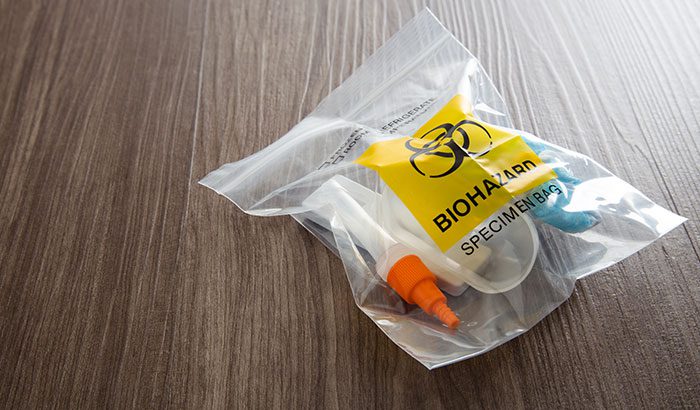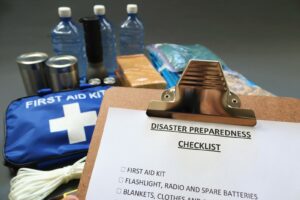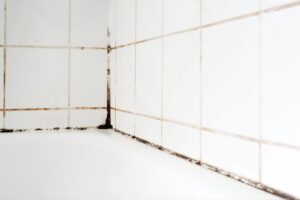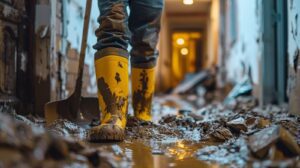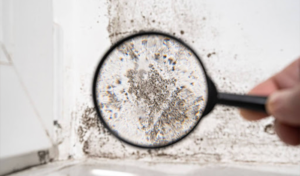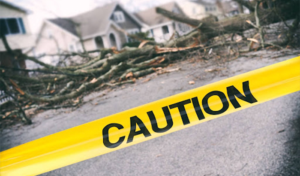What events can make up a home biohazard? Many hazards could constitute a biohazard. If there is any kind of organic material that is where it could pose harm to your household, you have a biohazard situation to address.
When it comes to home biohazards, there are three things you need to consider when deciding how to clean your home:
- What type of biohazard are you dealing with?
- How extensive is the biohazard?
- How dangerous is the biohazard?
Addressing these questions can help you determine how to best keep your home safe and what you need to do for your home biohazard cleanup.
1. What Type of Biohazard Are You Dealing With?
The first step in addressing a home biohazard is determining the type of hazard you are dealing with.
Here is a list of things that could create a biohazard in your home:
- Chemical spills — The average homeowner normally keeps a small assortment of chemicals for home cleaning. It’s very common to find chemicals like bleach, vinegar, and lye in the kitchen or bathroom, where you will most use them.
In the event of a chemical leak, your family may be at risk from the mixing chemicals. For instance, mixing a common chemical used for cooking, like vinegar, with a common chemical used for cleaning, like bleach, can cause harmful gasses, like chlorine gas.
Be cautious of chemical spills. Coming in contact without personal protective equipment can be fatal.
- Rotting organic materials — Our homes, particularly our kitchens, are the center of our personal life.
There are a lot of organic materials stored in and near your kitchen. With regular use, these foods and materials are harmless. If neglected for a long time, their decomposition can create a breeding ground for harmful fungi and bacteria.
- Sewage backup — Sewage incidents can be fairly common. While a sewage incident may not pose a high level of risk, it should be treated carefully.
Sewage often contains a plethora of harmful microorganisms. Any surface that comes in contact with sewage should be sanitized to prevent the spread and harm of these harmful microorganisms.
- Mold and fungi — All homes have mold and fungi growing inside. Most of the time, fungi spores lay dormant, waiting for the right conditions to grow. Occasional patches may bloom in the right environment but are typically addressed.
Some mold and fungus infestations grow unbeknownst to the homeowner and begin to cause health problems. It is best to address mold and fungi infestations as soon as possible.
- Presence of harmful pathogens — Notable pathogens such as Swine Flu and COVID-19 have become infamous in the last decade. These harmful microorganisms pose a severe health risk and should be addressed swiftly.
- Animal carcass — Soon after an animal dies, it begins to decompose. The process starts small, with a dramatic spike in bacterial production and fungus. It will continue to escalate as small bugs and animals find and use the carcass as a food source.
Coming in contact with a carcass may expose you to bacteria or fungi that could cause sickness or near lethality.
- Fatal home accidents — Sometimes tragic accidents cause a large area to be covered by fluids like blood, saliva, or other body fluids to cover an area.
Microorganisms feed on these organic materials and can harm those who come into contact with them.
- Violent incidents — When the peace of a home is shattered by a tragic event such as a homicide or when someone dies by suicide, the resulting scene can pose a severe biohazard.
As with fatal home accidents and animal carcasses, microorganisms feed on organic material, posing a serious risk to those engaged in the home biohazard cleanup.
2. How Extensive Is the Biohazard?
The extensiveness of the biohazard affects how long it will take to clean, what kind of materials you should use, and the extent to which personal protective equipment and quarantine will be necessary.
For instance, if your nose becomes bloodied, you don’t necessarily need to enact a wide quarantine zone and don a hazmat suit to clean the blood that accidentally gets on the floor. At the same time, you shouldn’t take to cleaning a room full from floor to ceiling with black mold in your gym shorts and sneakers.
Each biohazard is different. The nature of the biohazard is also important.
If a chemical spill creates lots of harmful chemicals being released into the air, you do not want to be anywhere near the hazard. But if it is a relatively small mold infestation — less than 10 square feet by EPA standards — you can be relatively safe cleaning it up yourself with limited use of personal protective equipment.
Use your best judgment to determine if you can clean up the hazard with relatively little risk.
3. How Dangerous is the Biohazard?
Adopting the scale used to evaluate the risk of biohazards in laboratories, here are our four levels of biohazard severity.
- Level 1 — This is the lowest level of biohazard. These hazards are dangerous but aren’t likely to cause severe illness or death.
Some examples of level 1 biohazard would be uncooked meats, small body fluid spills like vomit or blood, or a small patch of mold in your shower. These aren’t hazards you should take lightly, but there is no need to do anything more than quickly and safely clean them up. - Level 2 — A step up from level one, biohazards are hazards that can cause moderate harm and should be cleaned using precautions like PPE and specialized tools and chemicals.
Some examples of a level 2 biohazard would be a rotting animal carcass, sewage spillage, a moderate patch of mold up to 10 square feet, or a small chemical spill.
These have the potential to cause harm if they come in contact with the skin or are accidentally inhaled. These hazards can be potentially lethal for vulnerable populations.
- Level 3 — Most homes will only ever reach a level 3 biohazard. These biohazards pose a severe health risk— to the extent of lethality — to those who come into contact with them. These biohazards may require a need for quarantine and advanced use of PPE.
Some examples of this would be meth cleanup, harmful pathogens with high risk but known cure or treatment, or a large chemical spill.
- Level 4 — Level 4 biohazards are reserved to categorize those hazards that are extremely lethal and have little to no ability to treat if one is infected. The hazards that would fall into this category are highly infectious and lethal diseases such as Ebola or Marburg.
Total Fire and Flood — Your Local Utah Biohazard Cleanup Professionals
If you need advanced help cleaning up a biohazard, we can help make your home safe quickly. Some biohazards require advanced equipment and can harm you if you attempt to clean them unprotected. Contact us today, so you don’t have to put yourself at risk of harm from a biohazard.

